
IALA Maritime Buoyage System PDF
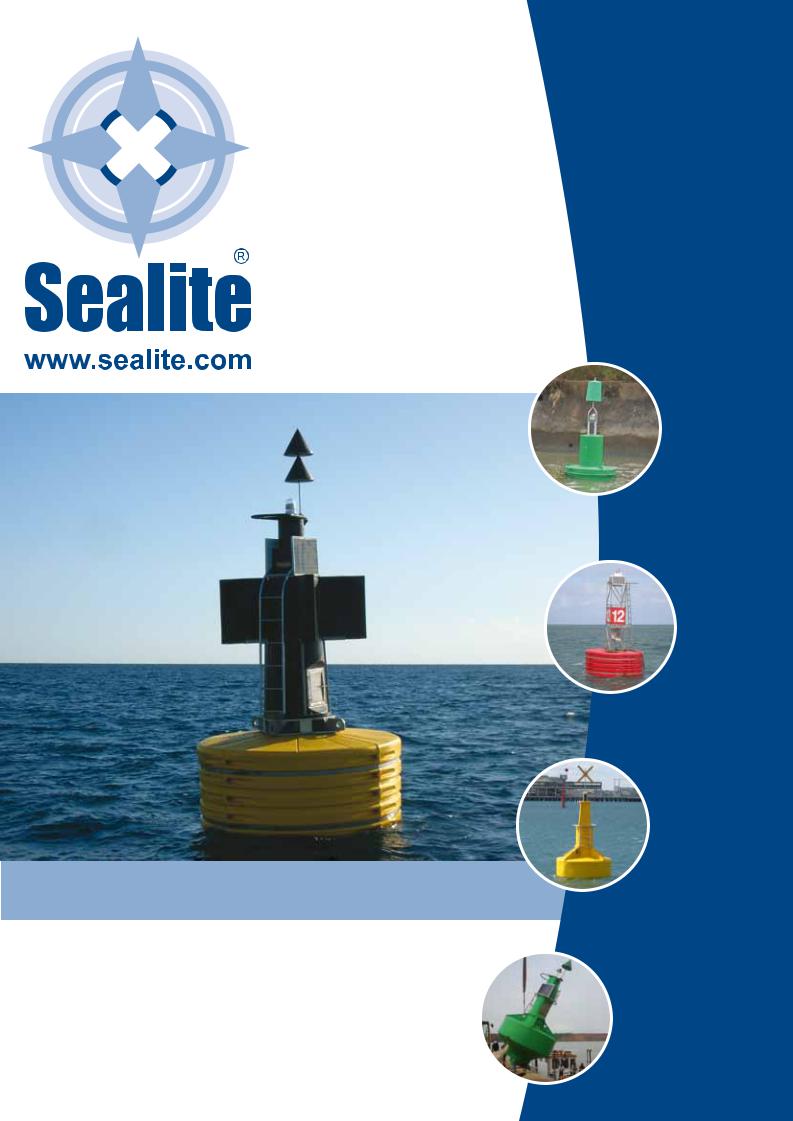
IALA Maritime Buoyage System
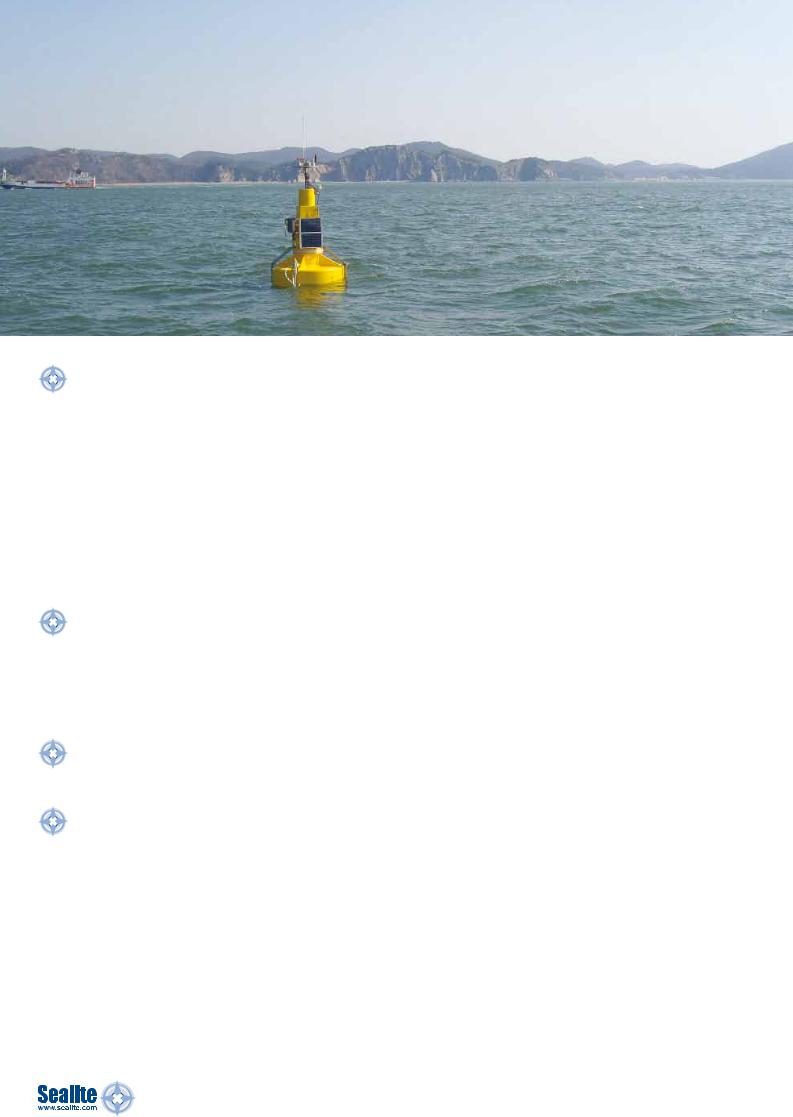
Above: Sealite Poseidon-1750 Ocean Buoy, West Sea
Who is IALA?
Established in 1957, IALA (International Association of Marine Aids and Lighthouse Authorities) is a non-proft international technical association. IALA provides nautical expertise and advice. IALA encourages its members to work together to harmonise aids to navigation worldwide and to ensure the movements of vessels are safe, expeditious and cost effective whilst simultaneously protecting the environment.
One of the ways IALA achieves this is by establishing technical committees which bring together experts from more than 80 countries around the world. The work of these committees is to develop recommendations
on technologies and practices which are available in publications such as IALA Recommendations and Guidelines.
IALA is chiefy known for its buoyage system. As early as 1976, there were more than 30 dissimilar buoyage systems in use throughout the world. To avoid confusion and help create safe navigation to mariners of different regions IALA have created a worldwide buoyage system.
Region A & Region B
To minimise the number of changes to existing systems and to meet conficting requirements IALA decided to create a system divided into two regions. The region followed is dependent on geographical location:
Region A: Europe, Australia, New Zealand, Africa, the Gulf and some Asian countries Region B: North, Central & South America, Japan, North & South Korea and the Philippines
What Region am I in?
Refer to Appendix A on page 7 to view map of IALA Buoyage Region A & Region B.
Types of Marks
The different types of marks used in the pilotage of vessels at sea are easily distinguished by their shape, colour, topmark by day and the colour and rhythm of the light by night. The fve types of marks are:
Lateral Marks: indicate the edge of a channel
Cardinal Marks: indicate the position of a hazard and the direction of safe water Isolated Danger Marks: indicate a hazard to shipping
Safe Water Marks: indicates the end of a channel and deep, safe water is ahead Special Marks: indicate an area or feature such as speed restrictions or mooring area
Lateral Marks are the only marks that differ by region, the other four marks are common to both Region A and Region B.
Refer to Appendix B on page 8 to view an example of the IALA Buoyage System for Region A. Refer to Appendix C on page 9 to view an example of the IALA Buoyage System for Region B.
Page 2
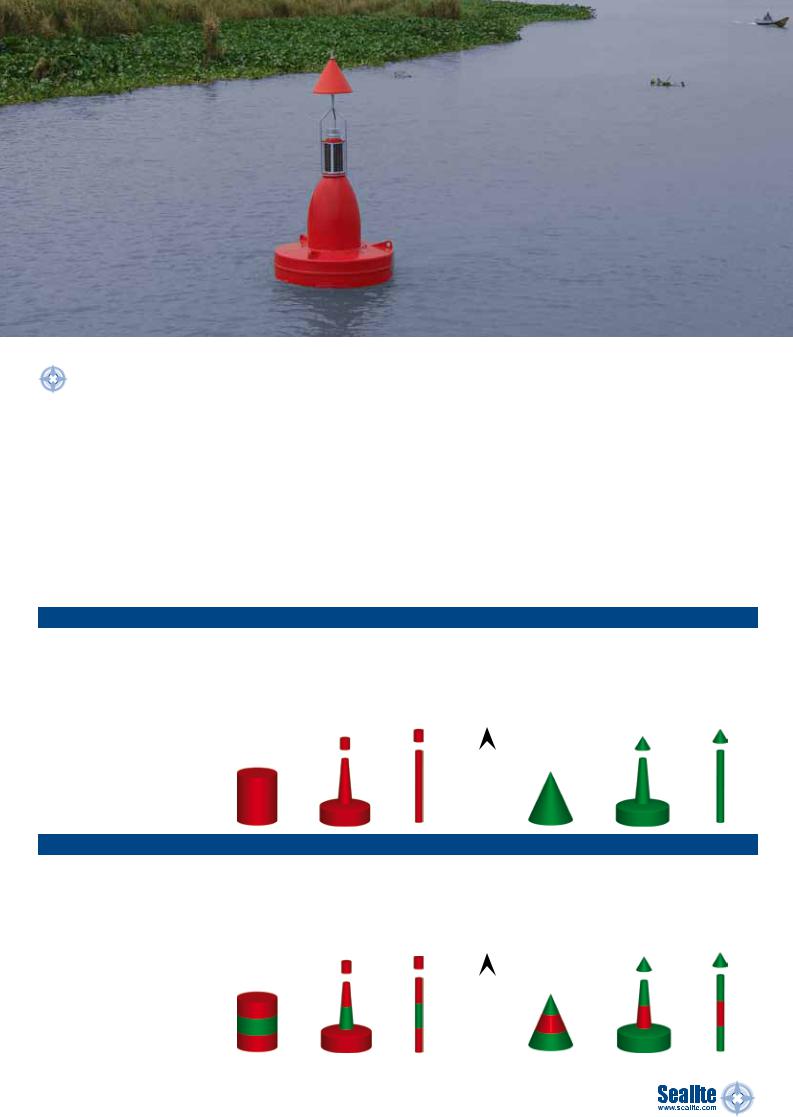
Above: Sealite SLB1250 Navigation Buoy, Manila, Philippines
Lateral Marks
Lateral marks defne a channel and indicate the port and starboard sides of the navigation route to be followed into a waterway such as a harbour, river or estuary from seaward. The vessel should keep port marks to its left and keep starboard marks to its right.
If lateral marks are unable to be represented by a can or cone shaped buoy they should carry the appropriate topmark.
At the point where a channel divides, a modifed lateral mark is used to indicate a ‘preferred’ channel (often a deep channel suitable for heavy commercial vessels) on one side and a secondary channel on the other. A preferred channel is indicated by red and green horizontal bands on the lateral marker. If a vessel wants to use the ‘preferred’ channel they observe the top colour of the mark while a vessel wishing to use the secondary channel observes the bottom colour. See ‘Preferred Channel to Starboard/Port’ in Table 1.1 and Table 1.2.
Table 1.1 LATERAL MARKS: REGION A |
|
|
|
|
|
|
|
Port Hand Marks |
|
Starboard Hand Marks |
|
||
|
|
|
||||
Colour |
Red |
|
Green |
|
||
|
|
|
|
|
|
|
Buoy Shape |
Cylindrical (can), pillar or spar |
|
Conical, pillar or spar |
|
||
|
|
|
|
|
|
|
Topmark (if any) |
Single red cylinder (can) |
|
Single green cone, point upwards |
|
||
|
|
|
|
|
|
|
Light Colour (when ftted) |
Red |
|
Green |
|
||
|
|
|
|
|
|
|
Light Rhythm (when ftted) |
Any apart from composite group fashing (2 + 1) |
|
Any apart from composite group fashing (2 + 1) |
|
||
|
|
|
|
|
|
|
|
|
DIRECTION |
|
|
|
|
|
|
|
||||
|
|
BUOYAGE |
|
|
|
|
|
|
|
||||
|
|
|
|
|
|
|
|
Preferred Channel to Starboard |
|
Preferred Channel to Port |
|
||
Colour |
Red with one broad green horizontal band |
|
Green with one broad red horizontal band |
|
||
|
|
|
|
|
|
|
Buoy Shape |
Cylindrical (can), pillar or spar |
|
Conical, pillar or spar |
|
||
|
|
|
|
|
|
|
Topmark (if any) |
Single red cylinder (can) |
|
Single green cone, point upward |
|
||
|
|
|
|
|
|
|
Light Colour (when ftted) |
Red |
|
Green |
|
||
|
|
|
|
|
|
|
Light Rhythm (when ftted) |
Composite group fashing (2 + 1) |
|
Composite group fashing (2 + 1) |
|
||
|
|
|
|
|
|
|
|
|
DIRECTION |
|
|
|
|
|
|
|
||||
|
|
BUOYAGE |
|
|
|
|
|
|
|
|
|
|
|
Page 3
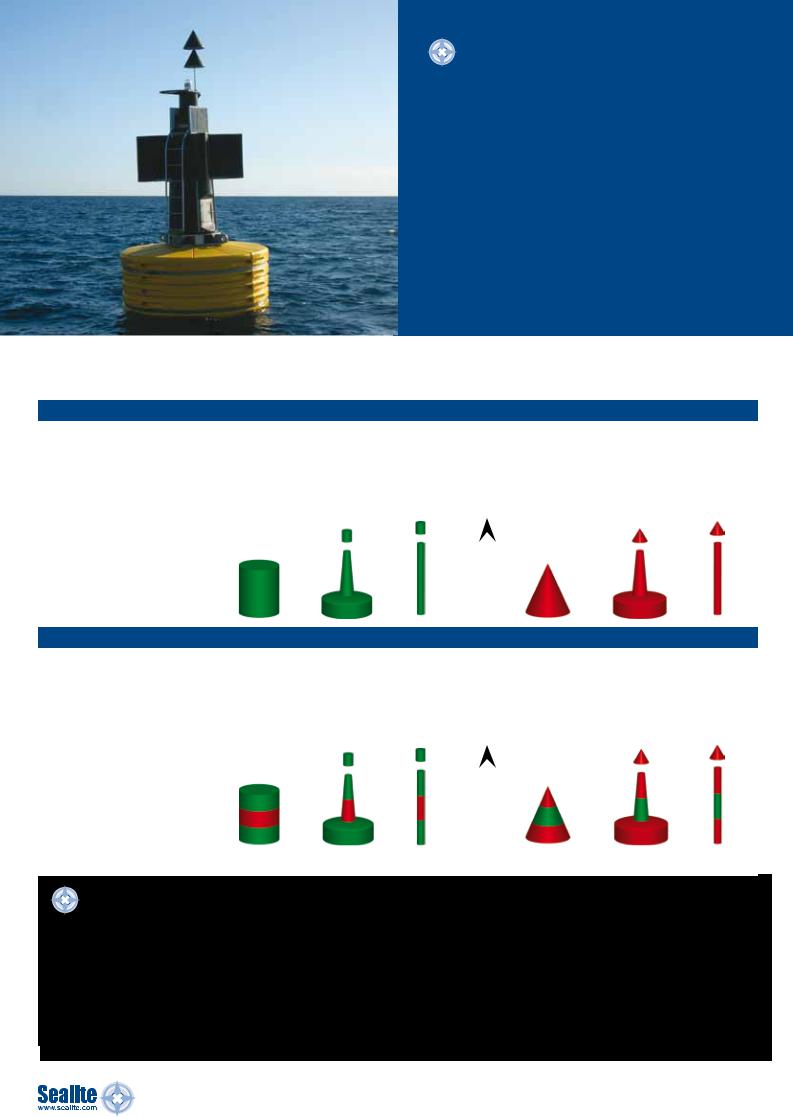
Sealite Buoys
Sealite Marine buoys are manufactured on-site from rotationally-moulded, UV-stabilised polyethylene, and are designed to offer a low maintenance, high visibility solution to marine navigation.
Some of the benefts polyethylene buoys have to offer are increased impact and puncture
resistance, lightweight for ease of deployment, low maintenance with no painting required, and they are eco-friendly and recyclable.
Sealite’s buoy products are available in a wide range of confgurations and sizes, and can be economically shipped worldwide.
Above: Sealite Trident-3000 Ocean Buoy, Damman Port, Saudi Arabia
Table 1.2 LATERAL MARKS: REGION B |
|
|
|
|
|
|
|
Port Hand Marks |
|
Starboard Hand Marks |
|
||
|
|
|
||||
Colour |
Green |
|
Red |
|
||
|
|
|
|
|
|
|
Buoy Shape |
Cylindrical (can), pillar or spar |
|
Conical, pillar or spar |
|
||
|
|
|
|
|
|
|
Topmark (if any) |
Single green cylinder (can) |
|
Single red cone, point upwards |
|
||
|
|
|
|
|
|
|
Light Colour (when ftted) |
Green |
|
Red |
|
||
|
|
|
|
|
|
|
Light Rhythm (when ftted) |
Any apart from composite group fashing (2 + 1) |
|
Any apart from composite group fashing (2 + 1) |
|
||
|
|
|
|
|
|
|
|
|
DIRECTION |
|
|
|
|
|
|
|
||||
|
|
BUOYAGE |
|
|
|
|
|
|
|
|
|
|
|
|
Preferred Channel to Starboard |
|
Preferred Channel to Port |
|
||
Colour |
Green with one broad red horizontal band |
|
Red with one broad green horizontal band |
|
||
|
|
|
|
|
|
|
Buoy Shape |
Cylindrical (can), pillar or spar |
|
Conical, pillar or spar |
|
||
|
|
|
|
|
|
|
Topmark (if any) |
Single green cylinder (can) |
|
Single red cone, point upward |
|
||
Light Colour (when ftted) |
Green |
|
Red |
|
||
|
|
|
|
|
|
|
Light Rhythm (when ftted) |
Composite group fashing (2 + 1) |
|
Composite group fashing (2 + 1) |
|
||
|
|
|
|
|
|
|
|
|
DIRECTION |
|
|
|
|
|
|
|
||||
|
|
BUOYAGE |
|
|
|
|
|
|
|
|
|
|
|
Sealite Lanterns
Sealite offers a complete range of LED marine lanterns. Sealite marine lanterns are designed to be maintenance free and have a service life of up to 12 years. With visible ranges of 1nm (1.8km) to more than 12nm+ (22.2km) the units are ideal for applications including aquaculture, hazard & perimeter marking, and general marine applications. Each product incorporates the latest in LED, solar, battery, electronics & moulding technology, and is designed to meet IALA recommendations for aids to navigation.
Contact your Sealite representative to fnd a lantern suitable for your application.
Page 4
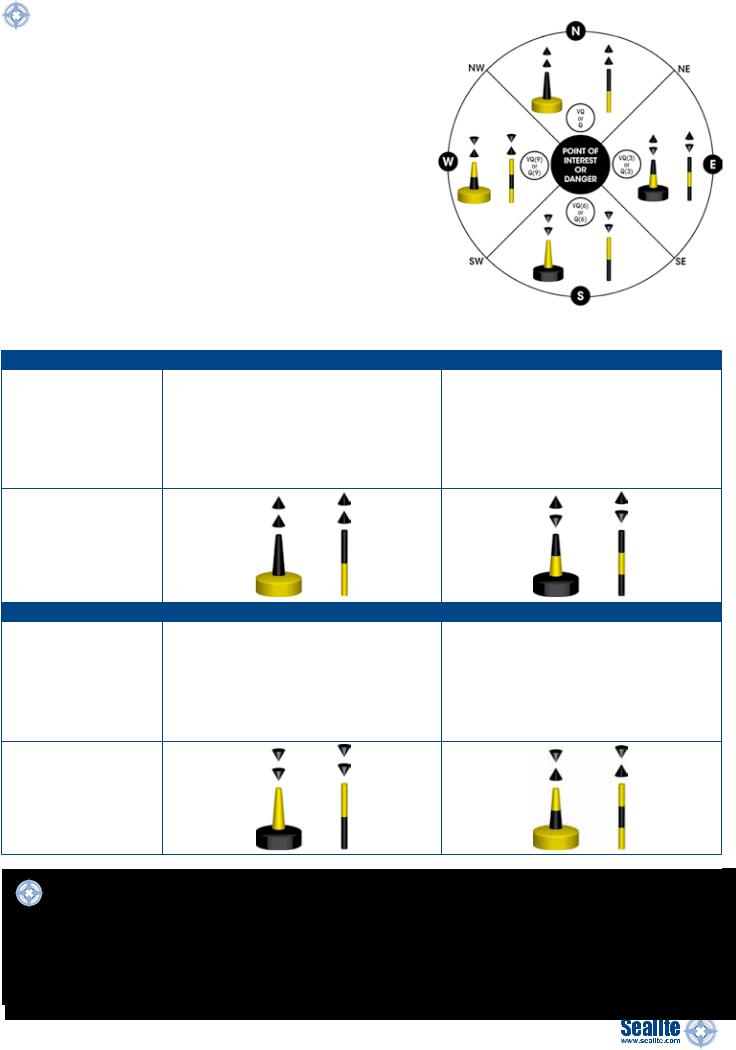
Cardinal Marks
A cardinal mark is used to signify a danger and show where the safest water can be found. Cardinal marks indicate the direction of safety as a compass direction relative to the mark. A cardinal mark is named after the quadrant in which it is placed. Due to the unique way cardinal marks use the points of a compass to signal safety it makes them meaningful regardless of the direction of the approaching vessel.
Cardinal marks have distinctive black and yellow markings and topmarks.
Cardinal marks can be used to show the following:
- The deepest water on an area on the named side of the mark - The safe side on which to pass a danger
- Draw attention to a feature in a channel such as a bend,
junction or end of a shoal |
|
|
Table 2.1 CARDINAL MARKS: REGION A & REGION B |
|
|
|
North Cardinal Mark |
East Cardinal Mark |
Colour |
Black above yellow |
Black with a single broad horizontal yellow band |
|
|
|
Buoy Shape |
Pillar or spar |
Pillar or spar |
|
|
|
Topmark |
2 black cones, one above the other, |
2 black cones, one above the other, |
|
pointing upward |
base to base |
|
|
|
Light Colour (when ftted) |
White |
White |
|
|
|
Light Rhythm (when ftted) |
VQ or Q |
VQ(3) every 5 seconds or |
|
|
Q(3) every 10 seconds |
|
South Cardinal Mark |
West Cardinal Mark |
Colour |
Yellow above black |
Yellow with a single broad horizontal black band |
|
|
|
Buoy Shape |
Pillar or spar |
Pillar or spar |
|
|
|
Topmark |
2 black cones, one above the other, |
2 black cones, one above the other, |
|
points downward |
point to point |
|
|
|
Light Colour (when ftted) |
White |
White |
Light Rhythm (when ftted) |
VQ(6) + Long fash every 10 seconds or |
VQ(9) every 10 seconds or |
|
Q(6) + Long fash every 15 seconds |
Q(9) every 15 seconds |
Q & VQ Light Rhythms
Q and VQ refer to the rhythm of a fashing light. Q is a quick fashing light and VQ is the symbol for a very quick fashing light.
Q = Flash frequency is at least 50 or 60 fashes per minute (1.2 or 1 fashes per second)
VQ = Flash frequency is at least 100 or 120 fashes per minute (0.6 or 0.5 fashes per second)
Page 5
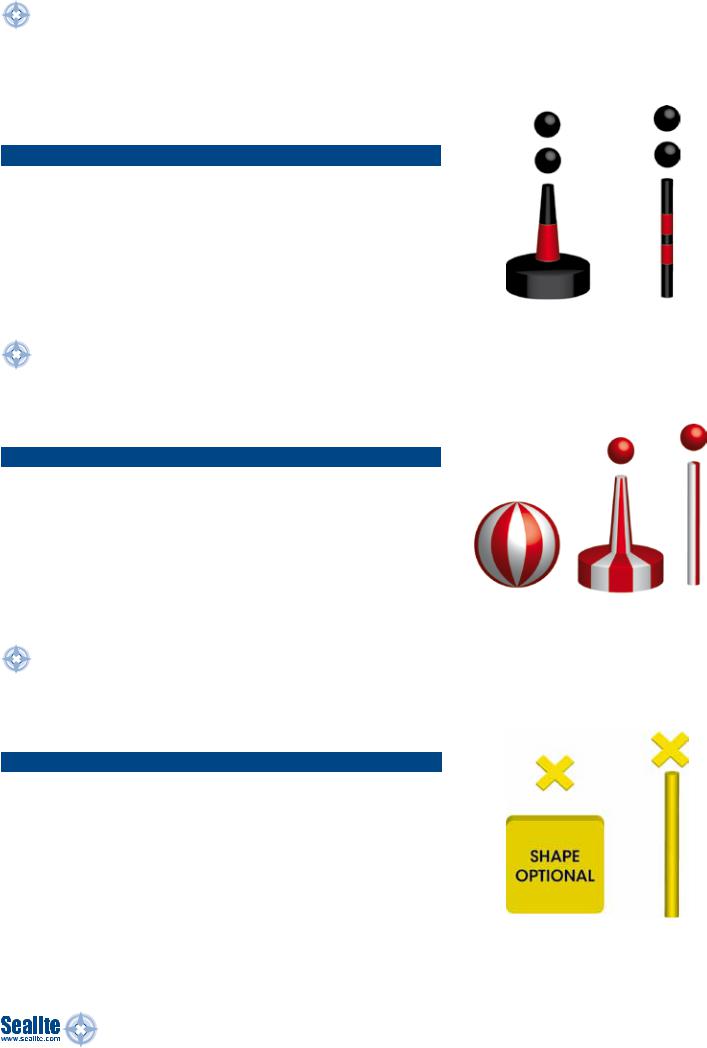
Isolated Danger Marks
An isolated danger mark is used to indicate a hazard to shipping such as a submerged rock or wreck which has navigable water all around it. It is erected or moored above the hazard.
The double sphere topmark is an important feature and needs to be visible by day. The topmarks should be as large as possible with the spheres clearly separated.
Table 3.1 ISOLATED DANGER MARKS: REGION A & REGION B
|
Isolated Danger Mark |
Colour |
Black with one or more broad horizontal red bands |
Buoy Shape |
Optional, but not conficting with lateral marks; pillar |
|
or spar preferred |
|
|
Topmark |
2 black spheres, one above the other |
|
|
Light Colour (when ftted) |
White |
|
|
Light Rhythm (when ftted) |
Group fashing (2) |
|
|
Safe Water Marks
Safe water marks indicate there is navigable water all around the mark including the end of a channel or mid channel, however, this mark does not mark a danger. They are the only mark to have vertical stripes.
Table 4.1 SAFE WATER MARKS: REGION A & REGION B
|
Safe Water Mark |
Colour |
Red and white vertical stripes |
|
|
Buoy Shape |
Spherical; pillar or spar with spherical topmark |
|
|
Topmark (if any) |
Single red sphere |
|
|
Light Colour (when ftted) |
White |
|
|
Light Rhythm (when ftted) |
Isophase, occulting, one long fash every |
|
10 seconds or Morse “A” |
|
|
Special Marks
Special marks do not usually assist navigation but are used to indicate a feature such as recreation zones, speed limits, mooring areas or cable and pipe lines including outfall sewerage pipes.
Table 5.1 SPECIAL MARKS: REGION A & REGION B
|
Special Mark |
Colour |
Yellow |
|
|
Buoy Shape |
Optional but not conficting with navigational |
|
marks |
Topmark (if any) |
Single yellow ‘X’ shape (St Andrew’s Cross) |
|
|
Light Colour (when ftted) |
Yellow |
|
|
Light Rhythm (when ftted) |
Any other than those described in cardinal, isolated |
|
danger and safe water marks |
|
|
Page 6
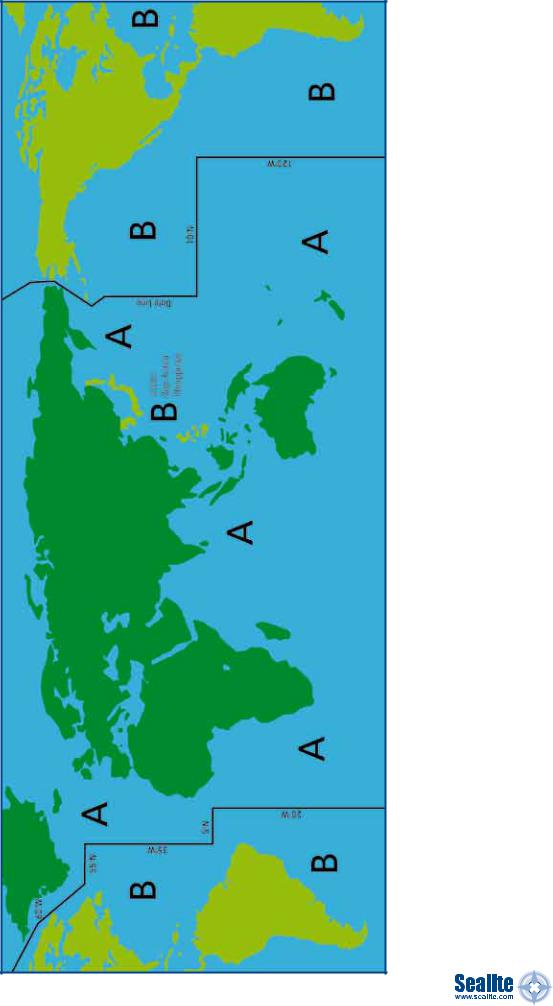
Appendix A: IALA Buoyage Region A & Region B
Page 7
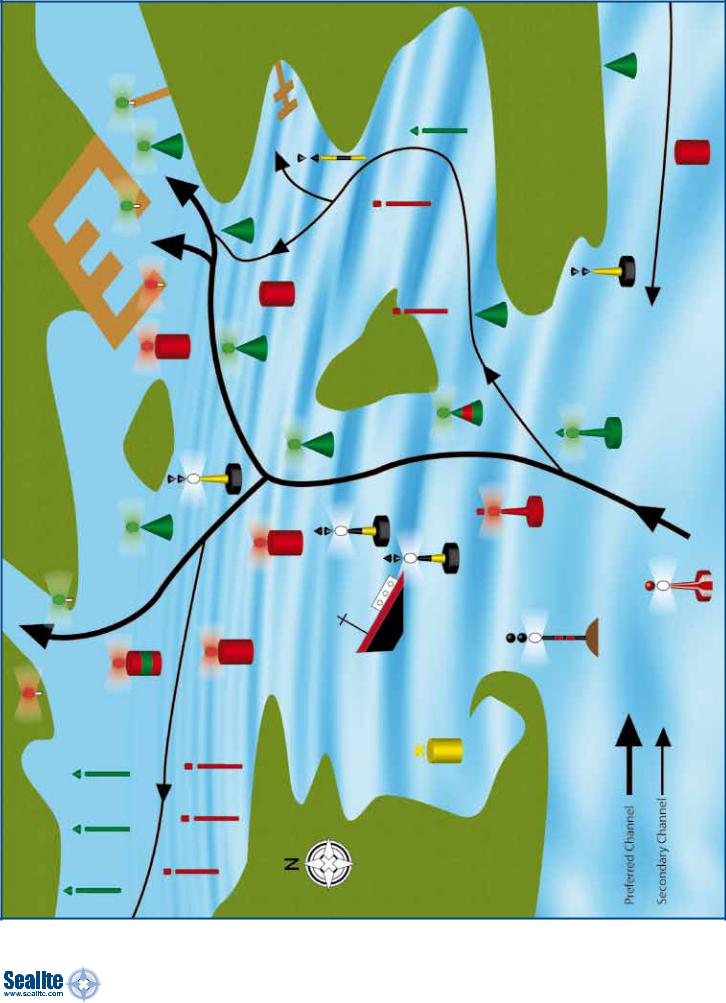
Appendix B: IALA Buoyage System Example, Region A
Page 8
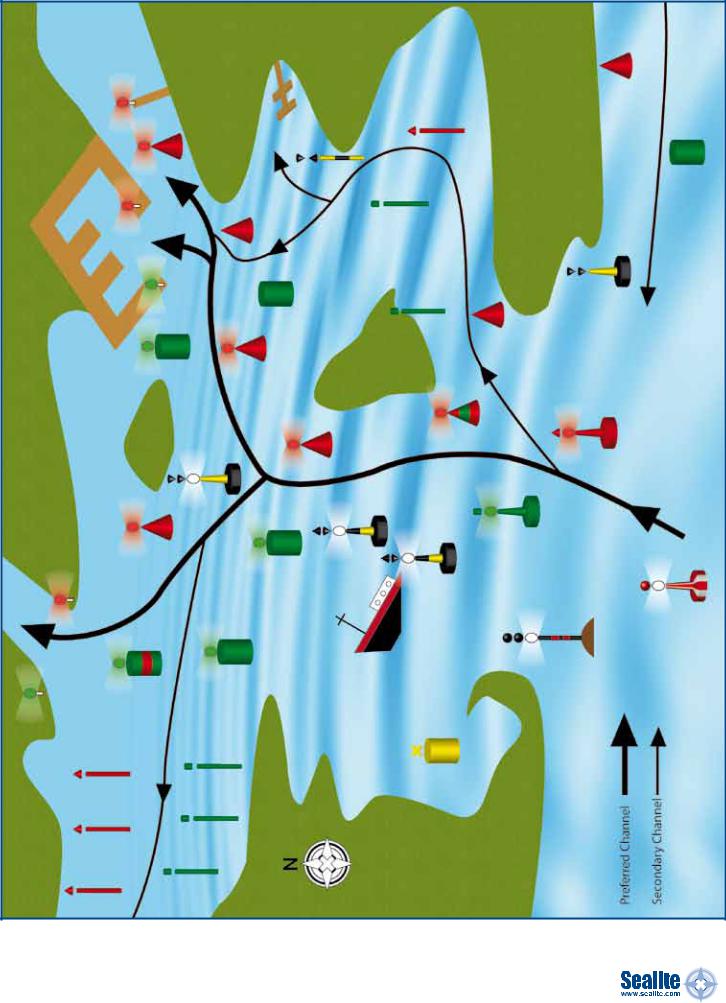
Appendix C: IALA Buoyage System Example, Region B
The information contained in this publication is advisory only. Please contact your local authority for rules and regulations particular to your region. For further information about IALA and the IALA Maritime Buoyage System please visit www.iala-aism.org
References:
IALA Maritime Buoyage System, IALA Publications, viewed 3 May 2010, http://www.iala-aism.org
Page 9
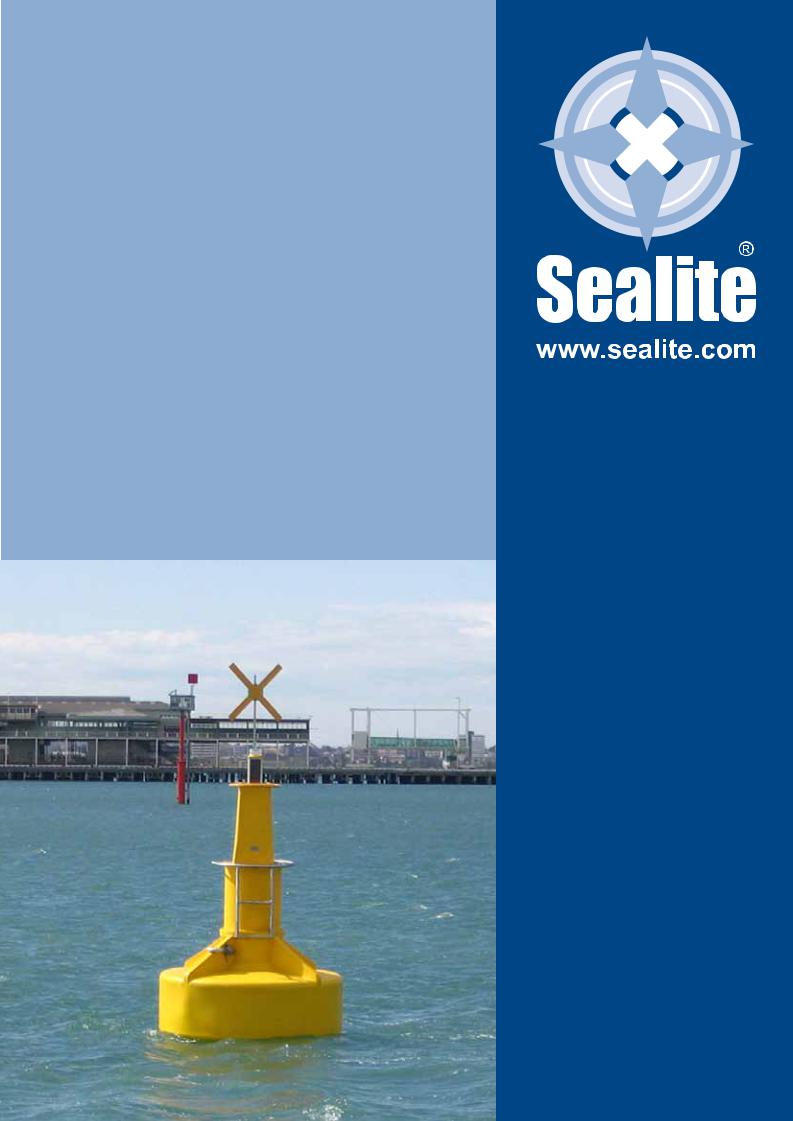
All Sealite products are manufactured to exacting standards under strict quality control procedures.
Sealite’s commitment to research and development, investing in modern equipment and advanced manufacturing procedures has made the company an industry leader in aids to marine navigation.
Sealite solar LED lanterns have an IP rating of IP68, the highest water/rust/dust proof rating available. Don’t trust anything less than an IP68 rated product.
By choosing Sealite you can rest assured you have chosen the very best.
Nautilus buoy with SLC420 solar marine lantern Port Phillip Bay, Australia
Sealite Pty Ltd
11 Industrial Drive, Somerville Vic 3912 AUSTRALIA
t: +61(0)3 5977 6128 f: +61(0)3 5977 6124
172 Lily Pond Road Gilford New Hampshire 03249 USA
t: (603) 737 1311 f: (603) 737 1320
w: www.sealite.com e: info@sealite.com
